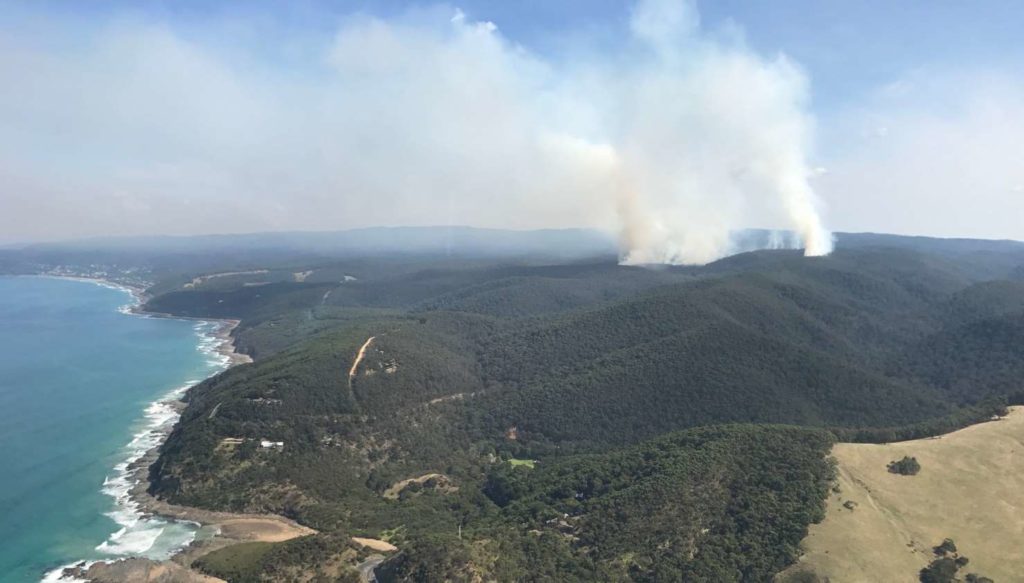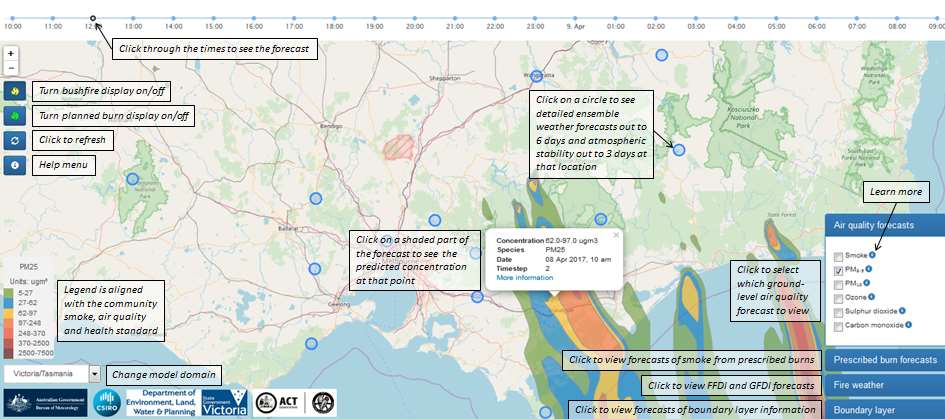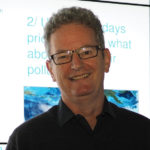AQFx – an Australian Smoke Forecasting System – Online Event

Please note this presentation will be streamed online from the Society’s Facebook page at the scheduled time. Members can also join as participants for questions and answers with the speaker via Zoom: please check your emails for the invitation from the Society (18 March).
The 2019-20 summer has seen massive fires across eastern Australia, with over 10 million Ha of land burned since September 2019. There has been tragic loss of life and devastation to ecosystems and infrastructure. There has also been significant levels of smoke exposure across the region, with approximately 10 million people experiencing elevated concentrations of PM2.5 (particles less than 2.5 micrometres in diameter). Exposure to fine particles for prolonged periods of time is well known to increase levels of morbidity and mortality amongst vulnerable members of our population. In this respect, the forecasting of pending smoke impacts is one tool that can be used to mitigate health risks, by providing advanced warning for effected people to take preventative medication, seek safe havens, or modify outdoor activities.
 The Bureau of Meteorology (BOM) routinely forecasts smoke from bushfires and prescribed burns using AQFx, an air quality forecasting framework which was originally developed for the Victorian Department of Environment, Land, Water and Planning (DELWP) to aid in the management of smoke from prescribed burns. This summer AQFx has been extensively used for forecasting bushfire smoke exposure, and also as input to visibility advisories for general aviation and the ADF.
The Bureau of Meteorology (BOM) routinely forecasts smoke from bushfires and prescribed burns using AQFx, an air quality forecasting framework which was originally developed for the Victorian Department of Environment, Land, Water and Planning (DELWP) to aid in the management of smoke from prescribed burns. This summer AQFx has been extensively used for forecasting bushfire smoke exposure, and also as input to visibility advisories for general aviation and the ADF.
Developed by a CSIRO, BOM, and a consortium of universities, the AQFx technology includes monitoring of fire propagation, smoke emission, smoke transport, smoke chemistry, population exposure, and communication modules. Join atmospheric scientist Dr Martin Cope to explore the major science components of AQFx and the use of the system to forecast smoke using case studies taken from both the current and historical bushfire and prescribed burn episodes.
About the speaker:
 Dr Martin Cope has worked in the area of air quality modelling and applications for over 30 years. He is currently working at CSIRO as a Principal Research Scientist in the Climate Science Centre. His principal area of research has been the development of models which describe the sources and formation of gaseous and particulate air pollution in the Australian atmosphere. Most recently he has been working on smoke forecasting in collaboration with the Bureau of Meteorology, universities and state government agencies.
Dr Martin Cope has worked in the area of air quality modelling and applications for over 30 years. He is currently working at CSIRO as a Principal Research Scientist in the Climate Science Centre. His principal area of research has been the development of models which describe the sources and formation of gaseous and particulate air pollution in the Australian atmosphere. Most recently he has been working on smoke forecasting in collaboration with the Bureau of Meteorology, universities and state government agencies.
Areas of research in which Martin has been involved have included investigating the relationship between climate change and air quality; simulating the sources and sinks of particle formation in urban and rural environments; investigating the impact of alternative motor vehicle fuels on urban air quality and the burden of disease; investigating the relationship between intra-urban pollution sources, population exposure and health impacts and investigating the transport and production of secondary inorganic and organic aerosols.








